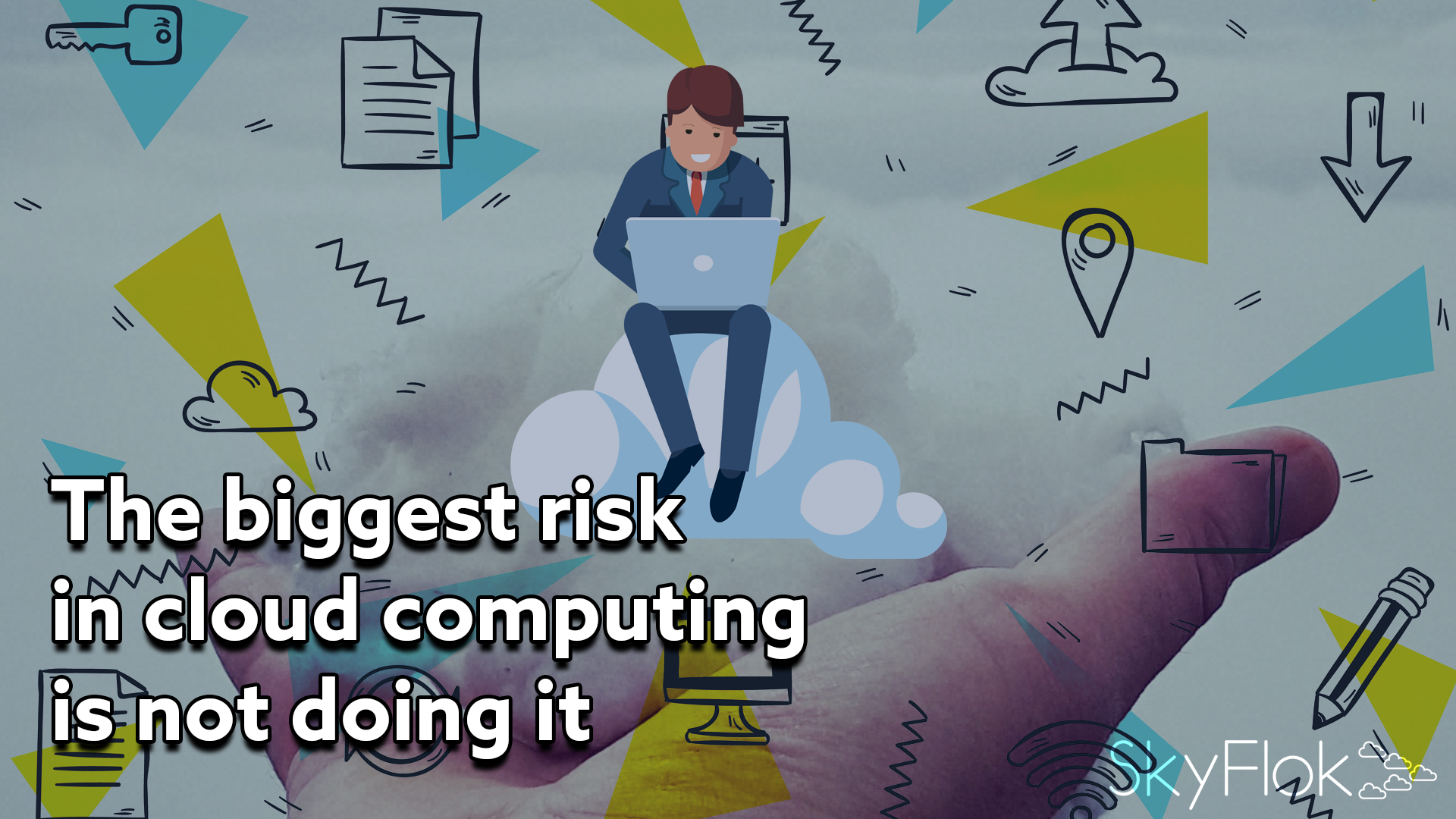Moving to the cloud means changing major business processes, which may add some risks. Risk in the form of cybersecurity disclosure and legal compliance ranked among the top concerns of the executives surveyed, according to Gartner’s latest “Emerging Risks Report”.
Some businesses will skip cloud computing due to the perception of its risks, even when the value to their business may outweigh these risks.
To make this transition easier, sign up to a privacy-first, flexible and groundbreaking Cloud storage and sharing service: SkyFlok.
SkyFlok is encrypted during transmission of the data and for data at rest and is designed to help our clients store and share files privately worldwide. It also enables you to choose the Cloud providers and locations where you want your files to be stored. Doing so, we help our clients comply with EU’s GDPR by allowing our clients to choose from our GDPR compliant locations – it is as simple as clicking a few times to select the configuration you need.
Organize any team, personal or client files online with SkyFlok. Join us!
Gartner’s latest quarterly report “Emerging Risks Report” surveyed 110 senior executives about risk, audit, finance, and compliance at large global organizations. Not surprisingly, they identified cloud computing as the top concern for the second consecutive quarter.
Why? Moving to the cloud means changing major business processes, which adds risk, and the cost of risk. Risk took in the form of cybersecurity disclosure and legal compliance ranked among the top concerns of the executives surveyed.
The Top 2 high-impact risks of moving to the cloud are related to information security threats. Social engineering and GDPR compliance were cited as the risks most likely to cause the greatest enterprise damage if there is no planning and preparation. But only 18 percent of the cross-functional executives surveyed considered social engineering to be an enterprise risk.
Let me put this data into perspective.
First, there are risks of changing any aspect of IT, as we saw when moving to the PC, LANs, client/server, mobile, and the web—all things that made us rethink IT yet again, as well as drive change that also drives risk.
Second, if businesses did not take risk then nothing would change—and they would die. So, the cost of risk should always be offset by the value gained in taking the risk. In the case of cloud computing, its better operational efficiency leads to lower operational costs. And cloud computing also improves business agility to better react to market changes and expand quickly as the business grows. These are all game-changers and value drivers for cloud computing.
Third, risk can be reduced with planning. That means taking the time to figure out what your issues are, how technology such as cloud computing can address your issues (if it can), and how to reduce the risks in doing so. Security, for example, is always a risk. But addressed with the right approaches and technologies, youre cloud-based system will actually be more secure than your “as is” on-premises systems.
What is unfortunate is that some businesses will skip past cloud computing due to the perception of its risks, when the value always outweighs most of the risky downside. Don’t fall into that trap, else you’ll be left behind.







